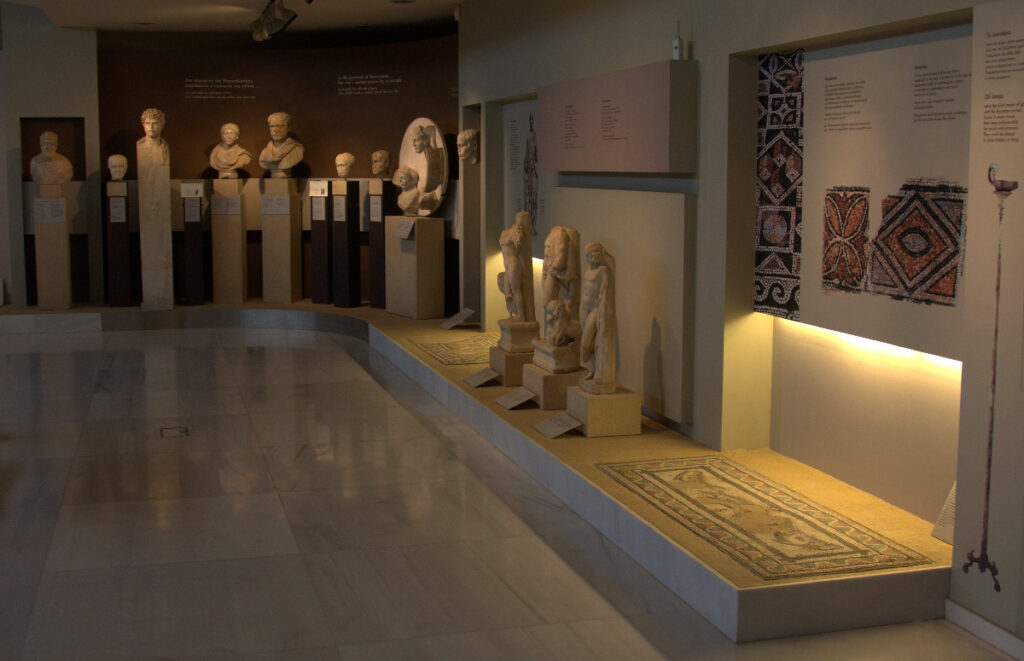Millions of visitors flock to Greece each year for a rich display of cultural heritage. Inside hundreds of museums, marble statues tower over tourists while brightly colored paintings and pottery line the walls. To visitors and locals alike, Greece’s ancient history appears frozen in time. But rising temperatures threaten to unfreeze some of the country’s long-preserved history.
“Climate change can play an important role, a serious role, for the indoor climate of museums,” said Efstathia Tringa, a meteorologist and doctoral student at Aristotle University of Thessaloniki.
Under the right conditions, artifacts can last for millennia. Museums must therefore maintain a strict set of indoor conditions known as a microclimate to repel pests, mold, and early decay. Warmer temperatures will make it harder for buildings to maintain ideal conditions for preservation because as outdoor temperatures rise, indoor temperatures could follow.
Monitoring Microclimates
Tringa and her colleagues took a closer look at how changes in outdoor climate affect indoor microclimates. For 1 year, they installed sensors to gather data on the indoor air temperatures and relative humidities of three sites in Greece: two modern museums and one ancient church.

The Archaeological Museum of Thessaloniki, one of the largest museums in Greece, hosts artifacts from ancient Macedonia, including the oldest surviving manuscripts in Europe. The other museum monitored by the project, the Archaeological Museum of Delphi, is one of the most visited museums in Greece, with artifacts from one of the most significant Panhellenic sanctuaries (and home to the famous oracle or Pythia). These facilities manage their microclimates with heating, ventilation, and air-conditioning (HVAC) systems.
In contrast, the Church of the Acheiropoietos is a historic site itself, dating to the 5th century. The Byzantine building does not have a cooling system and relies on heaters and the insulating effects of its stone structure to maintain a stable temperature.
All three buildings contain irreplaceable artifacts, many of which are sensitive to temperature and humidity.
All three buildings contain irreplaceable artifacts, many of which are sensitive to temperature and humidity.
The study revealed that the indoor temperatures of the three buildings roughly tracked with outdoor temperatures throughout the year, though the museums were more stable than the church.
In the summer, the museums were cooler inside than outside, remaining below 30°C even when outdoor temperatures reached 40°C. However, without an HVAC system, the ancient church’s indoor temperature rose steadily with outdoor temperatures, at times creeping close to 35°C.
Contrary to the temperature trends, the modern museums showed little sensitivity to outdoor humidity and were usually around 20% less humid inside than out—great news for artifact preservation. The church, however, hovered at just about 5% less humid than the outdoors.
The researchers presented their findings at AGU’s Annual Meeting 2023 in San Francisco.
Maintaining Microclimates
The data highlight that the two museums with HVAC systems will be able to protect their collections in the face of climate change, but the Church of the Acheiropoietos has wooden detailing on the ceiling and 800-year-old paintings that may be at risk of damage.
“I think it’s a good study,” said architect and indoor environment specialist Kristian Fabbri at the University of Bologna, who was not involved in the research. It’s important to understand indoor microclimate change and manage the associated risks, he explained.
“Each person is a pollutant.”
Museums and historic buildings worldwide will need to take adaptive measures to maintain stable indoor microclimates against rising temperatures. But adaptation isn’t one size fits all. “Every site is a specific site,” Fabbri said. Managing the environment may be key, he added.
“Each person is a pollutant,” Fabbri said. “My temperature has a thermal influence on the indoor environment. With my breathing, I put water vapor into the air and change the relative humidity, and too much humidity can damage historical paper or books. Then, I move dust and produce it too.”
As temperatures rise, reducing the number of visitors could be one way to maintain indoor microclimates in historic buildings that lack modern climate controls.
—Gabriella Lewis, Science Writer


